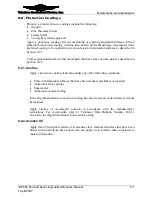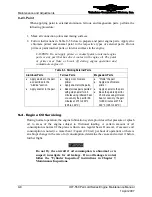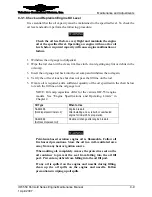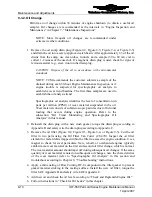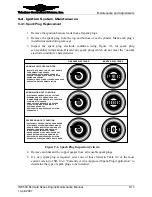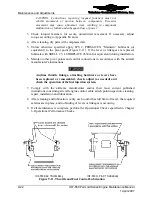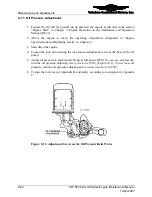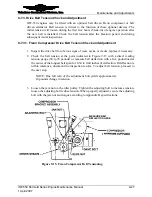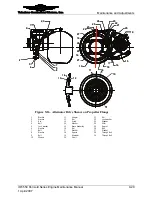
Teledyne Continental Motors, Inc.
TM
Maintenance and Adjustments
IOF-550 Permold Series Engine Maintenance Manual
9-15
1 April 2007
9-3.4. Oil Trend Monitoring and Spectrographic Oil Analysis
Spectrographic oil analysis identifies the concentration in parts per million (PPM) of
wear material components in an oil sample collected during an oil change. (Refer to the
section “Collecting an Oil Sample” in this chapter.) This analysis is done, starting with
the first oil change sample, and continues with successive oil changes. The first few
samples establish a baseline; subsequent samples (at least three) taken over time establish
engine wear trends. These trends help determine if wear material is deviating from the
normal baseline. (Establishment of the baseline and ensuing wear trends assume that the
analyses are being done by the same laboratory using the same method of analysis.)
The established baseline and database that develops from the series of spectrographic oil
analyses over time serves as a reference point for determining the engine’s oil trend
analysis as it relates to normal engine wear and deviation thereof.
This analysis helps identify internal engine problems. Deviations from the normal wear
pattern of analysis warrant further investigation and may help detect problems. However,
spectrographic oil analysis, even if done properly, may not provide any indication of
fatigue type failure.
There are two methods of performing spectrographic oil analysis:
•
Atomic absorption (identifies particles smaller than five microns)
•
Atomic emission (identifies particles smaller than ten microns)
9-3.5. Oil Sample Collection
Generally, the oil sample can be collected at either of the following times:
•
During the oil change procedure, before any new oil is added
•
Between oil changes
The oil sample must be taken after the engine has been operated during a normal flight
profile (including normal cruise and maximum power settings) for at least 30 minutes at
normal temperature as defined Specifications and Operating Limits in Chapter 2.
NOTE: Collect the oil sample within 30 minutes after shutting
down the engine.
Procedure
1.
Clean any dirt or debris from around the oil sump drain plug.
2.
Use the following sample collection devices:
a.
Sampling tube and/or funnel
b.
Sample vial
NOTE: The sampling tube, funnel, and sample vial must be clean
and free of any debris, foreign material, or residue for sample
integrity and accurate analysis.
3.
Collect 1 to 2 ounces (30 to 60 ml) of oil from one of the following sample collection
locations consistently:







